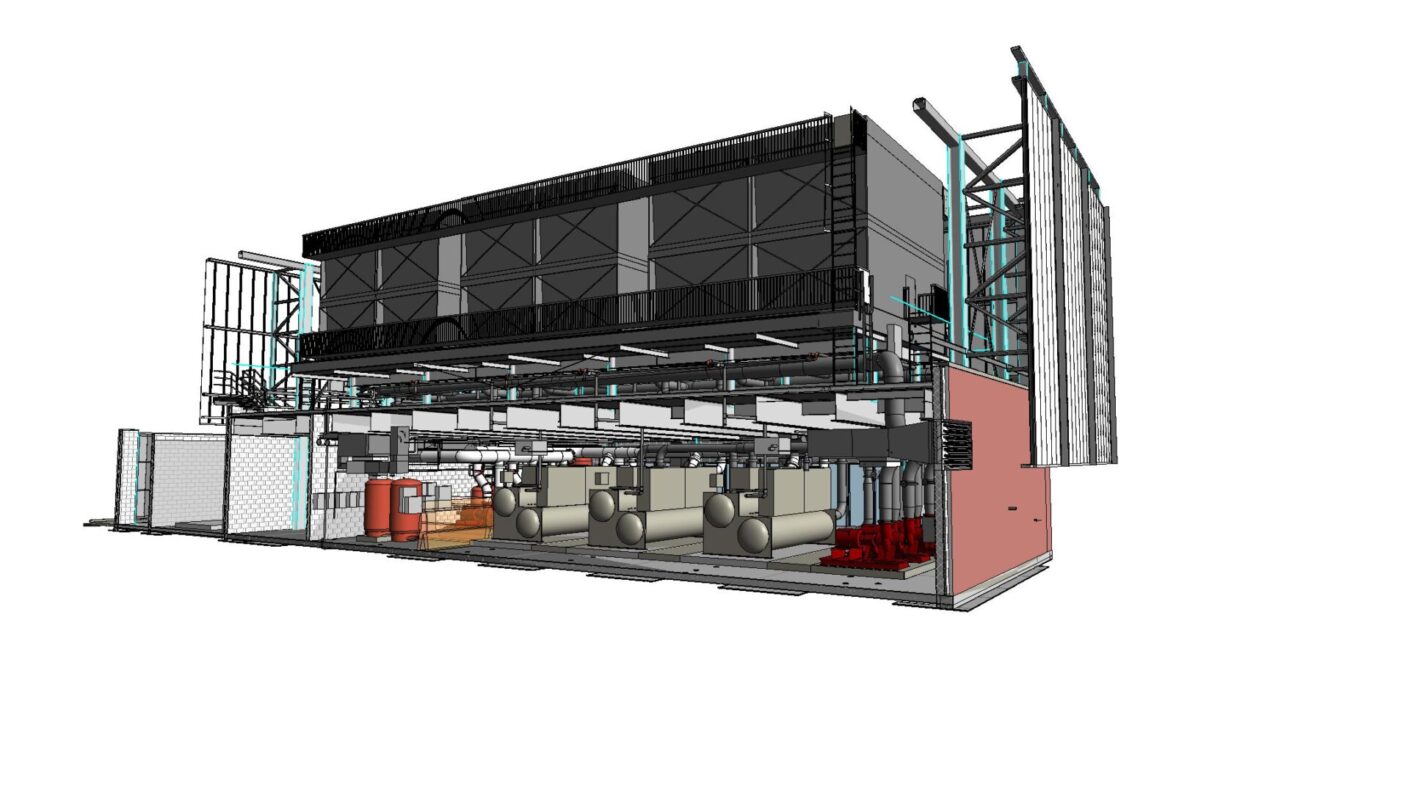
- 8,000 gpm of chilled water distribution capacity
- 52% below Oregon Energy Code
- $400K energy-efficiency rebate
CASE STUDY: Magnetic-Bearing Chiller Plant
Learning Objectives
After reading this magnetic-bearing chiller plant case study, you should be able to:
- Estimate the scale of energy savings of a magnetic-bearing chiller plant compared to a minimum code-compliant system.
- Understand the principles that make magnetic-bearing chillers perform at higher efficiency levels compared to oil-lubricated bearing chillers.
- Develop the necessary performance curves for proper modeling of a magnetic-bearing chiller plant.
Project Description
The newly constructed District Utility Plant (DUP) at Oregon State University (OSU) is capable of providing 4,500 tons of chilled-water cooling to a network of science, research, and academic buildings on campus. It contains three 1,500-ton magnetic-bearing centrifugal chillers and six 727-ton cooling towers with variable speed fans. The design and modeling of the highly efficient magnetic-bearing chillers in this centralized cooling system were key drivers in providing over 2 MWh of electricity savings a year and securing over $420,000 in utility-funded energy efficiency incentives for the University.
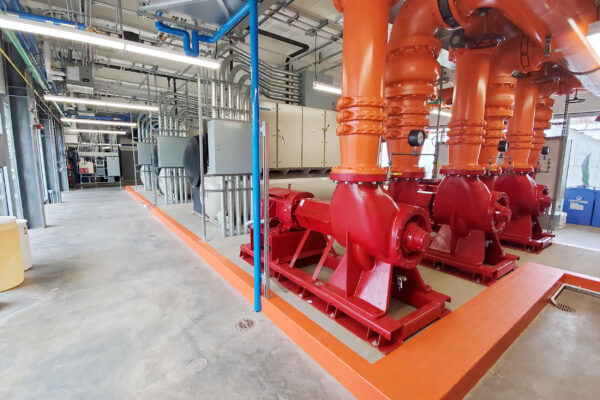
Technology Highlights
Magnetic-bearing chillers use centrifugal compressors with active digitally controlled magnetic bearings at the rotating compressor shaft. Front and rear magnetic radial bearings float the shaft vertically while the end magnetic thrust bearings prevent horizontal movement. Magnetic-bearing chillers provide three primary efficiency gains over traditional chillers with oil-lubricated shaft bearings:
1. Reduced Friction Losses
A magnetically levitated shaft has nearly no friction or wear since the shaft rotates in a magnetic field on an air cushion. The shaft is rotated with a variable frequency drive (VFD) and a permanent magnetic synchronous motor that is very efficient at low operating speeds.
2. Increased Heat Transfer
In an oil-lubricated bearing chiller, the oil droplets in the bearings are mixed and carried with the refrigerant. A portion of the oil is removed with oil separators, but some oil continues to travel with the refrigerant through the refrigeration cycle. The oil mixed with the refrigerant reduces the performance of the refrigerant in the condenser and the evaporator. Additionally, as the refrigerant vaporizes in the evaporator, the resultant oil concentrate has the potential to accumulate in the evaporator, further reducing the heat transfer over time as the oil builds up. As oil-free systems, magnetic-bearing chillers improve efficiency, decrease maintenance, and reduce performance degradation over the life of the chiller compared to oil-lubricated bearing chillers.
3. Reduction in Chiller Lift
Lift is defined as the difference between the refrigerant pressure in the condenser and the refrigerant pressure in the evaporator. This is also proportional to the difference in the chilled water supply temperature and the condenser leaving water temperature. In general, compressor efficiency improves when lift is minimized.
Oil-lubricated bearing chillers require a specific minimum refrigerant differential pressure between the condenser and evaporator in order to maintain a minimum velocity to carry oil back to the compressor. This lift requirement is accomplished by a combination of compressor speed and higher minimum entering condenser water temperature.
In a magnetic-bearing chiller, there is no oil to return back to the compressor; therefore, colder condenser water temperatures are allowed in the chiller to reduce lift and improve chiller efficiency.
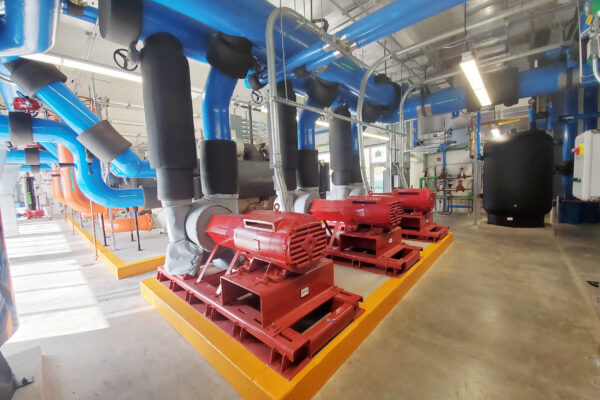
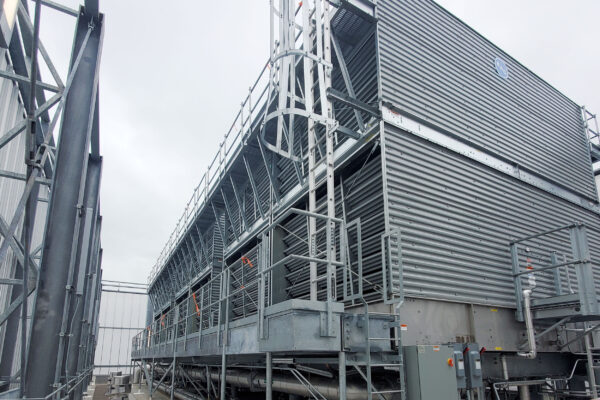
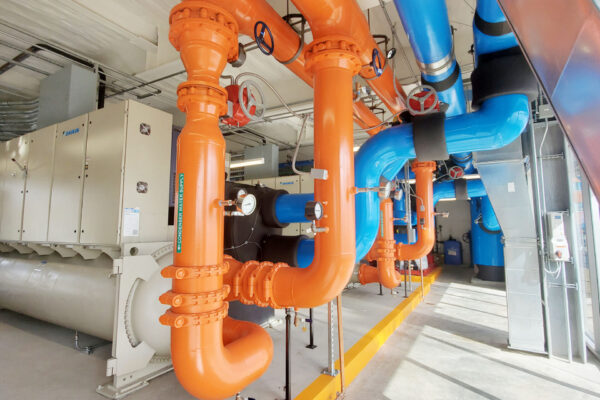
Furthermore, some magnetic-bearing chiller manufacturers have the logic and controls that allow the chiller to operate in an “inverted” condition where the entering condenser water temperature can be colder than the leaving evaporator water temperature. Running “inverted” can be used in lieu of a traditional “free cooling” cycle without the added piping, control strategies, and heat exchangers. In addition to lowering the condenser water temperatures in a magnetic-bearing chiller, the operating speed of the compressor can be lower in low load situations. Magnetic-bearing chillers still have lift limits to avoid chiller surge (occurs when refrigerant begins to flow in the opposite direction), but these limits are not associated with returning oil back to the compressor. This makes low load operation significantly more efficient in a magnetic-bearing chiller.
In addition to the higher efficiency, there is a significant reduction in maintenance with magnetic-bearing chillers. With oil-lubricated bearings, the chiller has more components such as oil pumps, oil reservoirs, oil coolers and filters, oil relief valves, oil heaters, and mechanical bearings. All these items degrade and break down over time. An oil-free Magnetic-bearing chiller does not suffer from this degradation, and the performance will remain much higher over the life of the chiller with lower maintenance costs.
Our Approach
To properly quantify the annual savings potential of magnetic-bearing chillers over oil-lubricated bearing chillers, substantial coordination with equipment manufacturer representatives is required in order to isolate chiller performance by three variables:
- VARIABLE 01
- Leaving evaporator water temperature
- VARIABLE 02
- Entering condenser water temperature
- VARIABLE 03
- Chiller part-load
This coordination with equipment manufacturers is important since the typical performance data published by manufacturers for specification sheets only provide chiller part-load performance based on Air Conditioning, Heating, and Refrigeration Institute (AHRI) testing conditions. These testing conditions provide part-load performance for a constant evaporator leaving temperature and a standardized AHRI condenser entering water temperature “relief” schedule.
Isolating the chiller performance by three variables is important since the typical performance data published by manufacturers for specification sheets only provide chiller part-load performance based on AHRI testing conditions. Joseph Iaccarino PE, CEM, LEED AP BD+C
For robust energy analysis results, however, an energy model needs to iterate the hourly chiller performance based on variation in each of these three variables independently. Chilled water and condenser water reset schedules in combination with part-load variation require more detailed data than AHRI testing results in order to accurately model annual energy consumption. Figures 1, 2, and 3 are examples of the performance data needed.
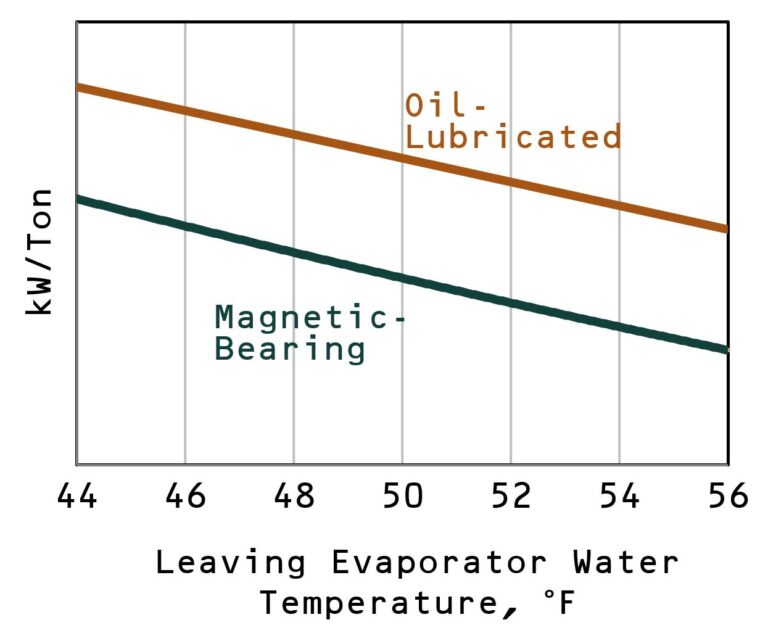
Figure 1 outlines the manufacturer representative data for chiller efficiencies based on the water temperature variation leaving the evaporator side of the chiller. This data assumes the water temperature entering the condenser and the part-load are constant.
In this case, the curves for a magnetic-bearing chiller and an oil-lubricated bearing chiller have generally the same shape with the magnetic-bearing chiller consistently outperforming the oil-lubricated bearing unit as the chilled water supply temperature varies with the reset schedule.
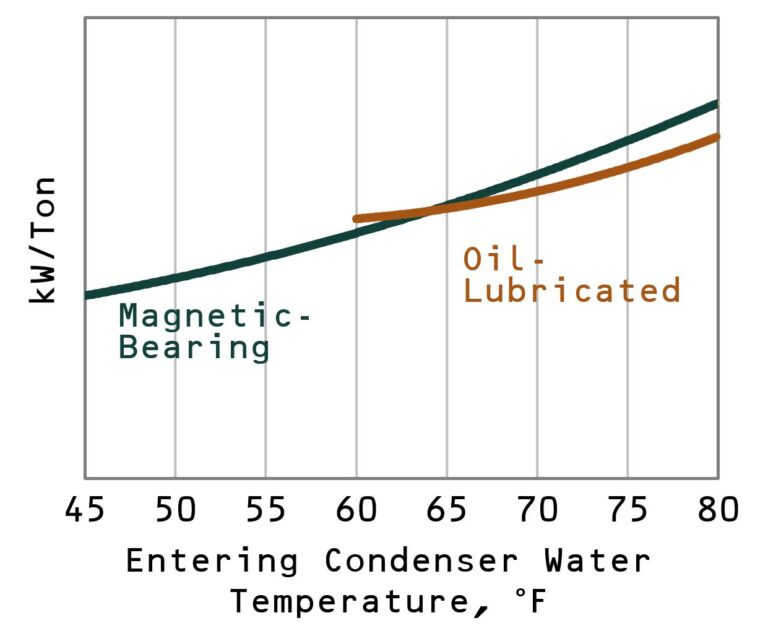
Figure 2 outlines the manufacturer representative data for chiller efficiency based on the water temperature variation entering the condenser side of the chiller. This data assumes the water temperature leaving the evaporator and the part -load are constant.
In this case, the magnetic-bearing chiller doesn’t outperform the oil-lubricated bearing chiller until the entering water temperature is below about 65°F. However, note that the oil-lubricated bearing chiller curve cuts off at 60°F. This illustrates the limitations in the ability of the unit to operate at low lift conditions. The largest opportunity for energy savings for the magnetic-bearing chiller is to operate the condenser water loop to provide the coldest water possible to achieve elevated energy savings.
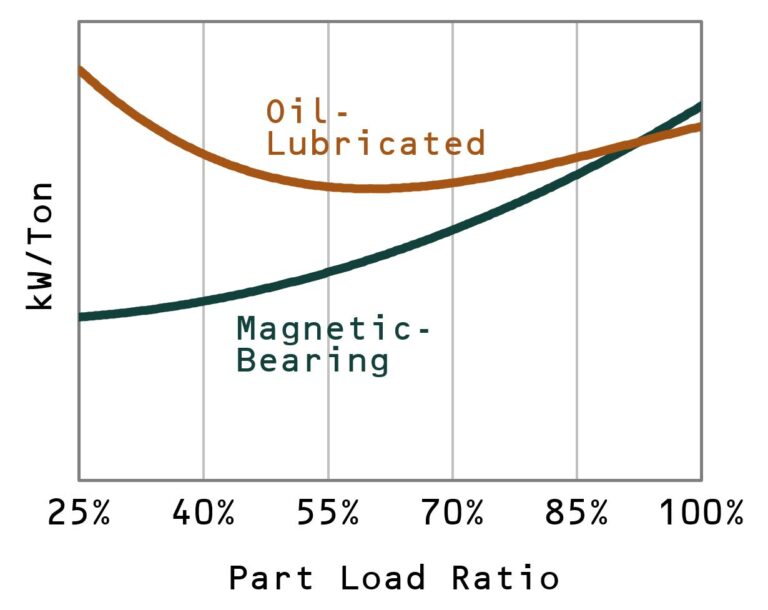
Figure 3 outlines the manufacturer representative data for chiller efficiency based on the part-load variation of the chilled water system. This data assumes the water temperature leaving the evaporator and entering the condenser stays constant.
In this case, the magnetic-bearing chiller outperforms the oil-lubricated bearing chiller at all part-loads below 90%. At very low loads, the magnetic-bearing efficiency continues to improve while the oil-lubricated bearing chiller’s efficiency begins to degrade when the part load ratio drops below 60%.
In summary, you can accurately estimate the savings from a magnetic-bearing chiller by working with manufacturer representatives to map the three variables discussed in this case study to the operating conditions of the plant. Doing so can often result in magnetic-bearing chiller realized savings of up to 50% when taking into account the part-load profile of the system as well as aggressive condenser water reset sequencing. The magnetic-bearing chiller’s low friction losses, increased heat transfer capability, and reduction in chiller lift requirements allow for this great opportunity for cooling energy savings.
Case Study Contributors: Joe Iaccarino, Dorrie Matthews, Mark Willett

Want to be a part of projects like this? Join Our Team.
